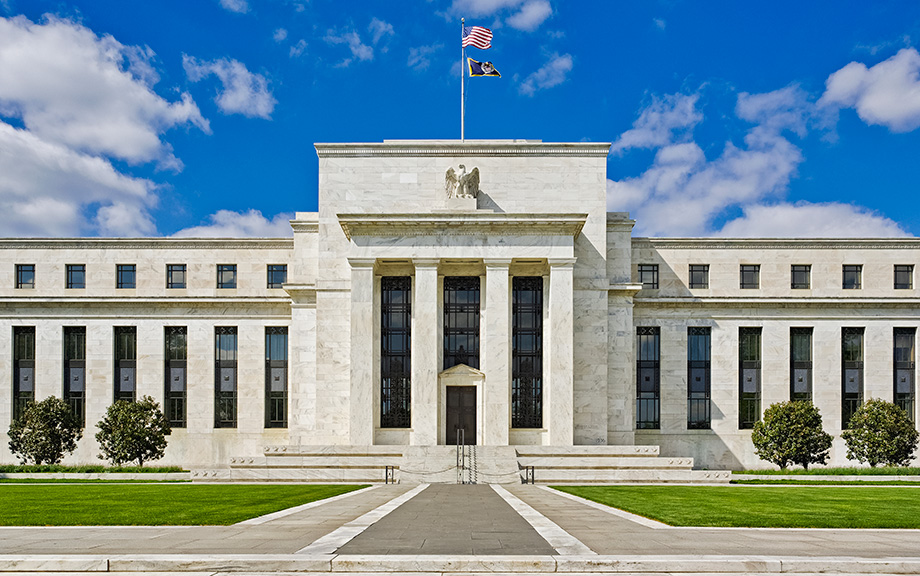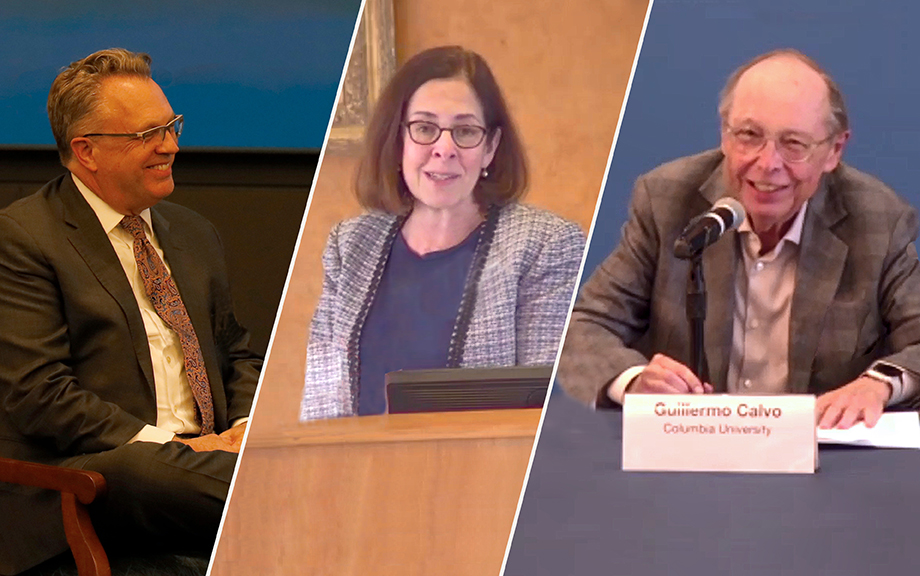Tracking Reserve Ampleness in Real Time Using Reserve Demand Elasticity

As central banks shrink their balance sheets to restore price stability and phase out expansionary programs, gauging the ampleness of reserves has become a central topic to policymakers and academics alike. The reason is that the ampleness of reserves informs when to slow and then stop quantitative tightening (QT). The Federal Reserve, for example, implements monetary policy in a regime of ample reserves, whereby the quantity of reserves in the banking system needs to be large enough such that everyday changes in reserves do not cause large variations in short-term rates. The goal is therefore to implement QT while ensuring that reserves remain sufficiently ample. In this post, we review how to gauge the ampleness of reserves using the new Reserve Demand Elasticity (RDE) measure, which will be published monthly on the public website of the Federal Reserve Bank of New York as a standalone product.
The Central Banking Beauty Contest

Expectations can play a significant role in driving economic outcomes, with central banks factoring market sentiment into policy decisions and market participants forming their own assumptions about monetary policy. But how well do central banks understand the expectations of market participants—and vice versa? Our model, developed in a recent paper, features a dynamic game between (i) a monetary authority that cannot commit to an inflation target and (ii) a set of market participants that understand the incentives created by that credibility problem. In this post, we describe the game, a type of Keynesian beauty contest: its main novelty is that each side attempts, with varying degrees of accuracy, to forecast the other’s beliefs, resulting in new findings regarding the levels and trajectories of inflation.
When Are Central Bank Reserves Ample?

The Federal Reserve (Fed) implements monetary policy in a regime of ample reserves, whereby short-term interest rates are controlled mainly through the setting of administered rates. To do so, the quantity of reserves in the banking system needs to be large enough that everyday changes in reserves do not cause large variations in the policy rate, the so-called federal funds rate. As the Fed shrinks its balance sheet following the plan laid out by the Federal Open Market Committee (FOMC) in 2022, how can it assess when to stop so that the supply of reserves remains ample? In the first post of a two-part series, based on the methodology developed in our recent Staff Report, we propose to assess the ampleness of reserves in real time by estimating the slope of the reserve demand curve.
Dropping Like a Stone: ON RRP Take‑up in the Second Half of 2023

Take-up at the Overnight Reverse Repo Facility (ON RRP) has halved over the past six months, declining by more than $1 trillion since June 2023. This steady decrease follows a rapid increase from close to zero in early 2021 to $2.2 trillion in December 2022, and a period of relatively stable balances during the first half of 2023. In this post, we interpret the recent drop in ON RRP take-up through the lens of the channels that we identify in our recent Staff Report as driving its initial increase.
The New York Fed DSGE Model Perspective on the Lagged Effect of Monetary Policy

This post uses the New York Fed DSGE model to ask the question: What would have happened to interest rates, output, and inflation had the Federal Reserve been following an average inflation targeting (AIT)-type reaction function since 2021:Q2, when inflation began to rise—as opposed to keeping the federal funds rate at the zero lower bound (ZLB) until March 2022, and then raising it aggressively thereafter? We show that actual policy was more accommodative in 2021 than implied by the AIT reaction function and then more contractionary in 2022 and beyond. On net, the lagged effect of monetary policy on the level of GDP, when measured relative to the counterfactual, has been positive throughout the forecast horizon, due to the initial boost associated with keeping the fed funds rate near zero in 2021.
A Bayesian VAR Model Perspective on the Lagged Effect of Monetary Policy

Over the last few years, the U.S. economy has experienced unusually high inflation and an unprecedented pace of monetary policy tightening. While inflation has fallen recently, it remains above target, and the economy continues to expand at a robust pace. Does the resilience of the U.S. economy imply that monetary policy has been ineffectual? Or does it reflect that policy acts with “long and variable lags” and so we haven’t yet observed the full effect of the monetary tightening that has already taken place? Using a Bayesian vector autoregressive (BVAR) model, we show that economic activity has, indeed, been substantially stronger than would have been anticipated considering the rapid policy tightening. Still, the model expects a significant slowdown in 2024-25, even though short-term interest rates are forecasted to fall.
The Evolution of Short‑Run r* after the Pandemic

This post discusses the evolution of the short-run natural rate of interest, or short-run r*, over the past year and a half according to the New York Fed DSGE model, and the implications of this evolution for inflation and output projections. We show that, from the model’s perspective, short-run r* has increased notably over the past year, to some extent outpacing the large increase in the policy rate. One implication of these findings is that the drag on the economy from recent monetary policy tightening may have been limited, rationalizing why economic conditions have remained relatively buoyant so far despite the elevated level of interest rates.
Why Do Forecasters Disagree about Their Monetary Policy Expectations?

While forecasters generally disagree about the expected path of monetary policy, the level of disagreement as measured in the New York Fed’s Survey of Primary Dealers (SPD) has increased substantially since 2022. For instance, the dispersion of expectations about the future path of the target federal funds rate (FFR) has widened significantly. What explains the current elevated disagreement in FFR forecasts?
The Credibility of Government Policies: Conference in Honor of Guillermo Calvo

Guillermo Calvo is a leading member of a group of economists who revolutionized macroeconomics by modeling how incentives and the anticipation of future policies affect aggregate outcomes. In celebration of his work, a conference was held in his honor at the Federal Reserve Bank of New York and at Columbia University on February 22-24, 2023. The conference program can be found on the event website. A longer version of this post with additional detail on the proceedings can be found here.
Bank Funding during the Current Monetary Policy Tightening Cycle

Recent events have highlighted the importance of understanding the distribution and composition of funding across banks. Market participants have been paying particular attention to the overall decline of deposit funding in the U.S. banking system as well as the reallocation of deposits within the banking sector. In this post, we describe changes in bank funding structure since the onset of monetary policy tightening, with a particular focus on developments through March 2023.










 RSS Feed
RSS Feed Follow Liberty Street Economics
Follow Liberty Street Economics